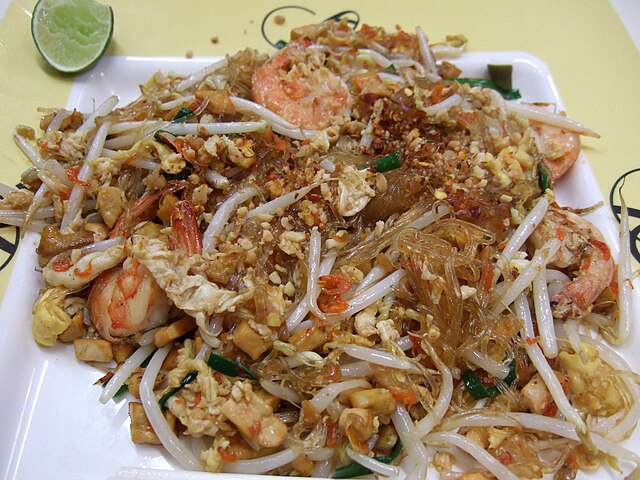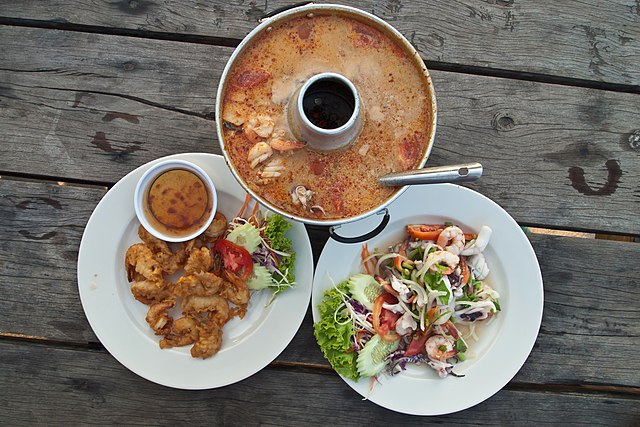
Thammasat University students interested in allied health sciences, business, economics, sociology, history, political science, and related subjects should find a new Open Access book available for free download at this link useful:
https://brill.com/display/title/63262?rskey=xhEEAi&result=27
Where Shrimp Eat Better than People: Globalized Fisheries, Nutritional Unequal Exchange and Asian Hunger is by Professor Wilma A. Dunaway, who teaches sociology in the Government and International Affairs Program at Virginia Polytechnic Institute, the United States of America, and Professor Maria Cecilia Macabuac of Mindanao State University-Iligan Institute of Technology. Philippines.
The TU Library collection includes several books about different aspects of food deprivation in Asia.
In the 2022 Global Hunger Index (GHI), Thailand ranks 56th out of the 121 countries with sufficient data to calculate 2022 GHI scores. With a score of 12.0, Thailand has a level of hunger that is moderate.
As its website explains, the GHI is a peer-reviewed annual report designed to comprehensively measure and track hunger at the global, regional, and country levels. The aim of the GHI is to trigger action to reduce hunger around the world.
Overall, the 2022 GHI suggested that global progress in ending hunger is at a near standstill. The main causes of hunger were conflicts, the climate crisis, and the economic consequences of the Novel Coronavirus 2019 (COVID-19) pandemic. Poverty, inequality, and inadequate governance worsen the situation. Currently, the goal of Zero Hunger by 2030 is not seen as a possible achievement.

The Introduction to Where Shrimp Eat Better than People observes that shrimp are often treated better than the workers who fish for them, as the shrimp have access to electricity, clean water, and adequate nourishment, while the workers do not:
East, South and Southeast Asia are a world hunger paradox. The sixteen major fisheries in this region produce more than three-quarters of the world’s fish. They account for a majority of the world’s wild seafood outputs and more than two-thirds of aquaculture production. Despite economic growth rates of 5 to 8 percent over the last two decades and high levels of food production, East, South and Southeast Asia are populated by two-thirds of the world’s hungry people. Even though these Asians spend more than half of their household budgets on food, regional calories per capita have fallen since 2000, and the highest incidence of hunger and micronutrient deficiencies occur among Asian peasant farmers and fishers. Because of these factual contradictions, the central question of our study is: Why are the Asian peasants who produce and export so much of the world’s food the hungriest people in the world? Fishery outputs are more frequently traded than any other agricultural commodities, with over 50 percent of production marketed internationally. Most of those fishery commodities are produced by the sixteen Asian fisheries. However, three-quarters of the world’s extremely poor households live and work in the rural communities of these Asian fisheries. Consequently, the most malnourished households in the world are the Asian rural workers who produce and process so much of the world food supply. According to the Food and Agriculture Organization, “the highest burden of hunger in absolute terms is to be found in South Asia,” which has exhibited only slight reduction in hunger rates since 1990. India is the country with the greatest number of undernourished people (194.6 million). In East Asia, China has 133.8 million hungry people while North Korea is “burdened by continuously high levels of undernourishment and shows little prospect of addressing its problems any time soon.” Furthermore, these Asian households do not consume much of the fishery output that they produce. On average, white rice and other carbohydrates account for nearly two-thirds of household food expenditures.
Scholarly Significance and Investigative Goals
We seek to fill a major gap in the social science literature and in public policy formulation. While social scientists have directed a great deal of attention to analyses of neoliberal impacts on Global South agriculture, economists and biological and management scientists have dominated the large body of literature about fisheries and aquaculture that has been published since 2000. We have found only one 21st century book that explores the centrality of fisheries to world hunger, but it does not investigate inequalities in consumption of fishery commodities or the state of peasant fishing communities.
Without addressing food security or peasant fishing communities, seven 21st century books focus on the ecological state of fisheries globally and on the externalized ecological costs of the international fishing industry. Without exploring food security, one book examines governance of fisheries, and three books analyze transformation of peasant fishing communities. Over the last three decades, two books examine state mandates that led to significant economic and structural changes in two Asian fisheries, without investigating linkages to food insecurity within those fishing communities. One NGO electronic publication examines human rights violations in shrimp aquaculture, including some ethnographic attention to hunger in fishing communities, but it does not offer a systematic analysis of inequalities in access to food.
Because social scientists have largely ignored fisheries, in-depth studies of social change and hunger in fishing communities have been very sparse since 1980. According to scholar Daniel Pauly, the focus has been upon the biological management of fisheries to the neglect of community well-being and food security because social scientists have been absent from the international scholarly debates and from public policymaking. He warns that “there is a need for social-science generalizations which is not presently met,” most especially in the formulation of “people-orientated and sustainable government policies.”
We seek to address this gap in the social science literature and in public policy formulation through careful examination of the region of sixteen Asian fisheries that are simultaneously home to most of the world’s hungry people and producers of a majority of global fishery outputs. Moreover, this Asian region is populated by thousands of small-scale fishing communities that are threatened by inequitable access to food, ecological degradation and climate change, and land and waterway dispossession caused by global and national policies that prioritize economic growth through fishery and aquaculture exporting.
At the turn of the 21st century, many international development organizations advocated that food security is more efficiently attained through exporting and importing than through transactions in domestic markets. In contrast to that overly-optimistic view, we introduce the notion of food extractive enclaves to explore how Asian fisheries have transformed their natural resources by employing imported Green, Blue and Gene Revolution technologies and chemicals to engage in nutritional unequal exchanges (our concept) with countries where there is little hunger. Agriculture and fisheries have been de-localized, and harvests have been standardized into a narrow menu of commodities that are in demand globally. We investigate five research questions that derive from the globalization of food production systems:
- Why is there such a high incidence of hunger and malnutrition among Asian peasant farmers and fishers who produce so much of the food that is traded in the world economy?
- Has international trade decreased the food insecurity of Asian fisheries?
- To what extent do Asian fisheries produce and import foods that address their nutritional needs?
- To what extent do Asian fisheries prioritize exports and/or nonfood uses over local consumption?
- How have women’s work and hunger been impacted by the integration of Asian fisheries into the world food trading system?

(All images courtesy of Wikimedia Commons)
